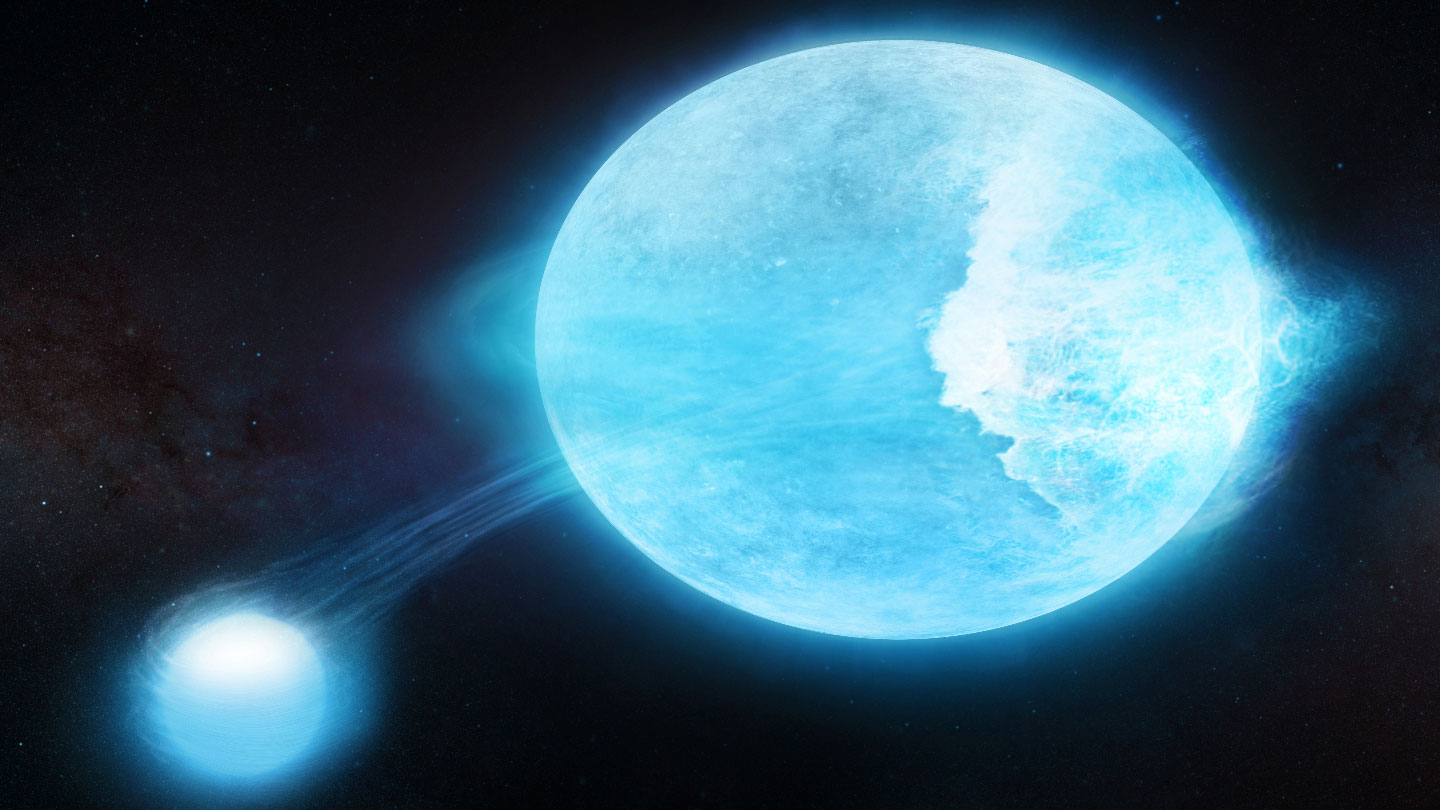Enormous waves of plasma may crash onto the surface of one massive star, resembling ocean surf hitting a sandy beach. Astrophysicist Morgan MacLeod from the Harvard-Smithsonian Center for Astrophysics in Cambridge, Mass, describes these moments as rare and dramatic. The star system, known as MACHO 80.7443.1718, is located 160,000 light-years away from Earth in the Large Magellanic Cloud. It consists of one visible star, 35 times the mass of the sun, and another unseen star with a minimum mass of 10 solar masses. Scientists suspect that as these stars orbit each other, gravitational forces raise tides on their surfaces, similar to how the moon affects Earth’s oceans. However, the tidal forces on the stars are much more extreme. Astrophysicist Jim Fuller from Caltech, who was not involved in the study, explains that the tide on the visible star can be as high as 10 percent of its diameter, which corresponds to a tidal wave approximately 3.3 million kilometers tall on a star that is about 24 times wider than the sun.
2023-08-21 08:00:00
Link from www.sciencenews.org
